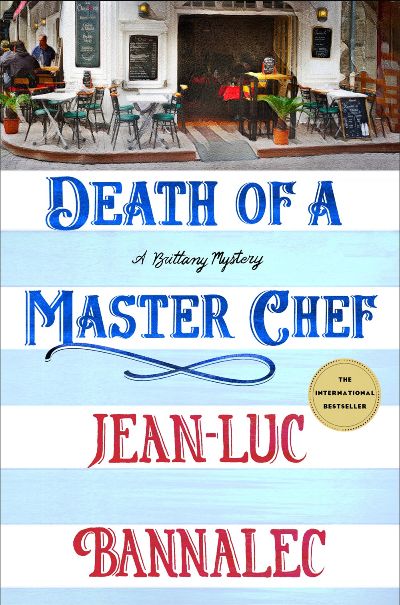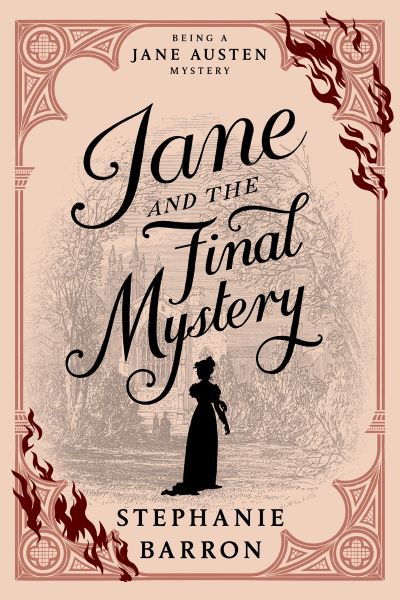On New Year’s Day 1985, as the countdown to Ronald Reagan’s second presidential inauguration begins, Turnip Coogan, in custody for the murder of real estate developer Randall Hubbard, falls from the roof of the courthouse in downtown Meridian, Mississippi. It may be morning in the rest of America, but that Reaganite optimism has bypassed the state’s “Queen City,” where strip malls developed by the late Hubbard have “sucked the life out of the city’s downtown” and its convenient location between New Orleans and Atlanta has made Meridian “a vital pit stop in the loosely affiliated crime belt of the Deep South.” Knowing of her son’s connection to the notorious Dixie Mafia, Lenora Coogan is convinced that his death was neither an accident nor a suicide and hires Black cop-turned-private investigator Clementine Baldwin and her white partner, Dixon Hicks, to find the “sons of bitches who killed him.” Complicating the investigation is the still-jailed Odette Hubbard, who had recruited Turnip to kill her husband and then canceled the hit job. She wants Clem and Dixon to identify the real killer, a request that puts a target on Clem’s back. Jim Crow laws may be a thing of the past, but Clem still must battle old-fashioned racism as she goes after the city’s powerbrokers. Wright’s (American Pop) Southern noir introduces a compelling, complex, bourbon-loving sleuth who both loathes and loves her hometown. Her budding friendship with Dixon will have readers anticipating their next crime-solving adventure.
Willy Williams
“Some families are haunted. The stuff of the past, the traumas and the ghosts—they just go on and on,” thinks Caleb “Cale” Casey, a successful real-estate broker in Hawaii who has been estranged for almost 30 years from his brother Ambrose, who runs a construction company back in their small Connecticut hometown. Both are tormented by a terrible secret that they buried as teenagers in Gibbs Pond. When a real-estate developer announces plans to dredge the pond in preparation for further development, Cale reluctantly returns home. Unbeknownst to the brothers, Lily Rowe, the contractor in charge of the dredging, also suffers from a dark family history, a childhood of abuse and neglect, shared with her troubled sibling Ray, that led to a shocking act of violence. How these well-drawn traumatized characters and their secrets collide in the present day, permanently changing the course of their lives, is the theme of Flaherty’s beautifully written debut. His Connecticut is not the monied suburbia of Rick Moody and John Cheever, but a rural working-class community more reminiscent of Daniel Woodrell’s Ozark mountain towns. After a strong buildup, the conclusion felt a bit anticlimactic. Still, this sad novel about the corrosive effects of family trauma and pain will linger in readers’ minds.
In his ninth outing, Commissaire Georges Dupin is reluctantly attending a team-building police seminar with his officious boss in the Breton port city of Saint-Malo, in France’s northwest. The packed four-day schedule, however, offers the consolation of a restaurant visit every evening, and Dupin uses his lunch hour to explore “the culinary heart of Brittany.” As he samples cheeses and sausages in the market hall of Saint Servain, bloodcurdling screams capture his attention. A woman has been stabbed to death in one of the stalls. Dupin quickly gives chase to the fleeing culprit, even “borrowing” a car from a local resident before losing the object of his pursuit. When he returns to the police station, Dupin learns that both the victim and the murderer have been identified: Blanche Trouin, a well-known chef and owner of a Michelin-starred restaurant, was killed by her younger sister, Lucille, also a successful chef. The two had engaged in a sibling rivalry that could outshine the famous Joan Fontaine-Olivia de Havilland feud in its vicious bitterness. When Lucille is quickly arrested, she refuses to confess or discuss a motive. Although Dupin’s colleagues back in Concarneau advise him to stay out of the case, the murder of Blanche’s husband indicates a second killer is at work, and the seminar participants are quickly organized into investigative teams. As Dupin probes with his teammates, the caffeine-addicted sleuth makes time to enjoy petit cafés and savor the beauty of the Emerald Coast. Once again Bannalec (the pen name of German-born Jörg Bong) has written an intriguing and tasty mystery with surprising twists in a beautiful, charming setting that will appeal to Louise Penny fans. It is also a good starter for readers new to the series. Do not read the mouthwatering descriptions of Breton delicacies on an empty stomach!
When 19-year-old Smilla Holst, a member of a wealthy local family, and her ex-boyfriend Malik Mansour disappear without a trace, Detective Inspector Leonore Asker expects to lead the investigation as section head at Malmö’s Serious Crime Command. But she is unexpectedly replaced by Jonas Hellman, a rival detective from Stockholm with a personal score to settle, and relegated to the police headquarters’s basement as temporary chief of the Resources Unit. In this obscure department, nicknamed the Department of Lost Souls, odd, cold cases and odd employees linger in obscurity. But as Asker quickly discovers, her new colleagues display unusual talents that come in handy when she probes a strange case involving a model-railway club and the ominous placement of miniature figurines that represent missing people, including the latest two victims. While Hellman pursues a kidnapping angle, Asker becomes convinced that her Resources Unit predecessor, now hospitalized in a coma, was on the trail of a serial killer who preys on urban explorers who wander into abandoned structures like factories and underground military facilities. The best-selling author of “The Game” trilogy launches an exciting, atmospheric crime series that introduces an appealingly smart and tough female protagonist with a troubled backstory in the vein of Stieg Larsson’s Lisbeth Salander, although not quite as edgy. The twisty, spine-tingling mystery that unfolds is creepy and sinister, laced with a touch of dark Scandinavian folklore.
Noted for her historical and speculative fiction (The Spanish Bow; Annie and the Wolves), Romano-Lax ventures into suspense territory with this atmospheric, entertaining thriller about a grieving mother investigating her daughter’s mysterious death. Three months after her 23-year-old daughter was presumed to have drowned in Lake Atitlán, Central America’s deepest lake, Rose arrives in Guatemala. Although a six-week search failed to recover Jules’s body, Rose is unsatisfied with the official investigation’s conclusion. She wants to learn more about her daughter’s final hours and why Jules, who had a lifelong fear of water, was last seen swimming in the lake. A key but uncooperative witness is Eva Marshall, the best-selling memoirist and Jules’s literary idol, for whom the aspiring writer had just started working as a personal assistant before her disappearance. Frustrated with Eva’s refusal to schedule a visit or a phone call from Rose and her ex-husband Matt, a determined Rose signs up under her maiden name for an upcoming memoir-writing workshop taught by the charismatic Eva at her Guatemalan lakeside retreat. “Rose has no ambitions whatsoever as a memoirist, not even the tiniest desire to be published.…But you do what you must, after you’ve already tried everything else.” Despite the glamor and natural beauty of her surroundings, Rose senses something off both in Eva and in how she runs her workshop. Did Jules uncover a dark truth that led to her death? While crafting a taut tale of suspense, Romano-Lax also turns a gimlet eye on the sometimes-toxic writing-workshop industry and the social media demands that turn authors into marketers and branders. In spite of an epilogue that feels a bit forced, the author has written a satisfying tale about the sometimes-strained but always unbreakable bonds between mothers and daughters.
It’s 1869 in the newly renamed capital of Tokyo, a year after the political revolution known as the Meiji Restoration overthrew the ruling Tokugawa shogunate that kept Japan in feudal isolation for over 200 years. It’s a time of rapid social change and political turmoil; not everyone is happy with the new government’s policy of Western modernization. Law enforcement, such as it is, is represented by five corrupt rasotsu (police officers) who are more interested in lining their pockets than in protecting the public. But they are reluctantly enlisted into the services of two chief inspectors from the Imperial Prosecuting Office as they investigate government corruption and a string of impossible-seeming murders. One inspector is the elegant and handsome Keisherō Kazuki, who cuts an odd figure in his old-fashioned clothes that make him look like “a courtier who had stepped out of the Heian period.” He is also obsessed with making the new government a just one and has imported a French guillotine as a more humane means of execution. His older colleague,Toshiyoshi Kawaij, is more down to earth, but he too is an outsider. The two men share a friendly rivalry as they probe several gruesome, supernatural-like killings. They are aided by Esmeralda, a beautiful Frenchwoman who followed Kazuki back to Japan (much to the dismay of Kazuki’s fiancée and her father) and who now is studying to become a miko, a Shinto shrine maiden with shamanistic powers that enable her to speak for the dead. How these crimes connect to the book’s title is resolved surprisingly and cleverly in the final section. Although the plethora of Japanese names can at first be confusing (a glossary of Japanese terms would also have been helpful), Karetnyk’s stylish and witty translation (there’s a lot of humor in this dark, bloody tale) quickly draws readers into Yamada’s atmospheric world. And Kazuki and Kawaij (a historical figure considered the father of the modern Japanese police force) make for a memorable sleuthing duo. Noted for his ninja novels, Yamada has written an engrossing, twisty tale that will appeal to fans of well-designed puzzle mysteries and international crime fiction with a fascinating historical setting.
Lennon, who has always played with a range of genres in his literary fiction (Broken River, Familiar, Mailman) now dips his pen into more commercial waters with the same inventive, adventurous flair. His new thriller, first in a series, revolves around twins (fraternal, not identical) Jane and Lila Pool. Thirty-five-year-old Jane leads a quiet suburban life in upstate New York, working in a dead-end administrative job at the local college, checking on her absent-minded professor father, and trying to parent adolescent Chloe despite the obnoxious interference of her disapproving mother-in-law. But her comfortable, if boring and unsatisfying, existence is turned upside down when she receives an encrypted email in the guise of spam from her long-estranged sibling. Lila has found their mother, who abandoned the girls 20 years ago, and she wants Jane to come with her to track and confront the wayward Anabel, who may or may not be a CIA agent-turned-drug-queen-pin. As the sisters embark on a whirlwind journey that eventually takes them down to Central America, alternating chapters recount the twins’ lonely, isolated childhood and teenage years as they spy on their distant and remote mother, savoring the few moments of kindness she shows them (“the marvelous, elusive feeling of their mother’s attention”), until Anabel’s final disappearance and an unexpected act of violence propel the girls on a traumatic road trip of escalating bad decisions. Along the way, readers discover who the true hard girl is. Mixing elements of a chase novel with an espionage thriller, this is also a touching story of sisterhood and motherhood in all their complications. Despite a muddled climax, Lennon’s well-written mashup of Where’d You Go, Bernadette and Thelma and Louise, but with a happier ending, will appeal to his fans and attract new readers.
It’s April 2020, the third week of a pandemic lockdown in an eerily quiet and empty Edinburgh. Detective Chief Inspector Karen Pirie of Police Scotland’s Historic Cases Unit has hunkered down with Detective Sergeant Daisy Mortimer in a “quarantine bubble” in her boyfriend Hamish’s spacious New Town apartment while he isolates up in the Highlands. There are no active cold cases to occupy the two officers, and Karen is languishing while longing for something meaningful to investigate. She fights her restlessness with her daily one-hour walks, the maximum allowed under tight restrictions. But when DC Jason Murray receives a call from a contact at the National Library about an unfinished manuscript in the archives of a recently deceased crime novelist, the team may have stumbled upon a connection to the cold case of a young woman who disappeared a year earlier. But how do they investigate a crime while trying to stay within COVID protocols? A determined Karen finds herself “making mincemeat” of the regulations, but as she tells a colleague, “I have to be out on the streets doing what I do. Because I want the world to still be a decent place when we come out on the other side.” In her seventh atmospheric series thriller, McDermid skillfully combines a twisty plot of murder and vengeance with the personal dramas of her detectives, set against the dramatic backdrop of a global pandemic. By the novel’s end, no one has been left unscathed by this traumatic time. In her acknowledgments, McDermid notes that she penned this novel only in 2023, needing the distance of time to write about those frightening early days. I suspect her book is the first of many crime novels that will explore the impact of COVID on the human psyche.
In March of 1817, Jane Austen is struggling to complete her latest manuscript, The Brothers, in spite of her declining health: “I, who enjoyed a riotous constitution throughout my four decades, had felt so little like myself in the previous twelvemonth that I found it hard to remember being free of pain.” But when the 15-year-old son of her widowed friend Elizabeth Heathcote (whose brother once proposed to Jane) is accused of the drowning death of a senior classmate at the prestigious Winchester College boys’ boarding school, she summons the energy to travel to Winchester with her beloved 19-year-old nephew, Edward, to investigate. There, she learns from Elizabeth that for the past three years, William had been the “subject of relentless attacks on his spirit, his mind, and his standing in the world.” He had been especially bullied by the sadistic late Arthur Prendergast, who enjoyed hazing the younger boys. Is there a connection between Prendergast’s murder, the malicious campaign against William, and an entailed inheritance that would benefit William? Jane is determined to clear William’s name before she succumbs to her illness. Over the course of 14 books, the multitalented Barron, who also pens spy thrillers as Francine Matthews, has brilliantly combined authentic historical and biographical details with skillful plotting and a credible evocation of Austen’s wry, distinctive voice. She brings the English author’s final investigation to a poignant, unforgettable close. Fans of this historical series will not be disappointed, and kudos to Barron’s excellent double-entendre title. While the earthly crime may be solved, the final mystery is one that we all will face.
It’s not all Aston Martin sports cars and martinis (“shaken, not stirred”) In Herron’s (Slow Horses) spy world. The reality is more mundane and bureaucratic in post-Brexit London, where British intelligence services have been the subject of a two-year inquiry, codenamed Monochrome and launched by a vengeful, now ex-prime minister. Thanks to the best efforts of First Desk, the agencies’ top banana, the panel headed by civil servants Griselda Fleet and Malcolm Kyle has been unable to uncover any wrongdoing. But as the probe is about to be shut down, Malcolm mysteriously receives a classified file exposing a long-buried operation in post-Cold War 1994 Berlin that ended in tragedy. How does this connect to a recent botched attack on a retired “joe” in rural Devon? Herron skillfully ties the loose threads together in a satisfying, yet melancholy conclusion that reflects upon the collateral damage caused by betrayals that are the lifeblood of espionage: “The cost of heroism—of betrayal—was high; it was the same cost, seen from opposite sides. And the same cost applied, it seemed, if you were neither hero nor traitor, but simply occupied the same neighbourhood.” Billed as a standalone, this smartly written, funny, and complex thriller is a good introduction for newbies, but fans of Herron’s “Slough House” books will recognize a few crossover characters.










